Innovative AH 64 Apache Helicopter, the most lethal aircraft weapon in the US military
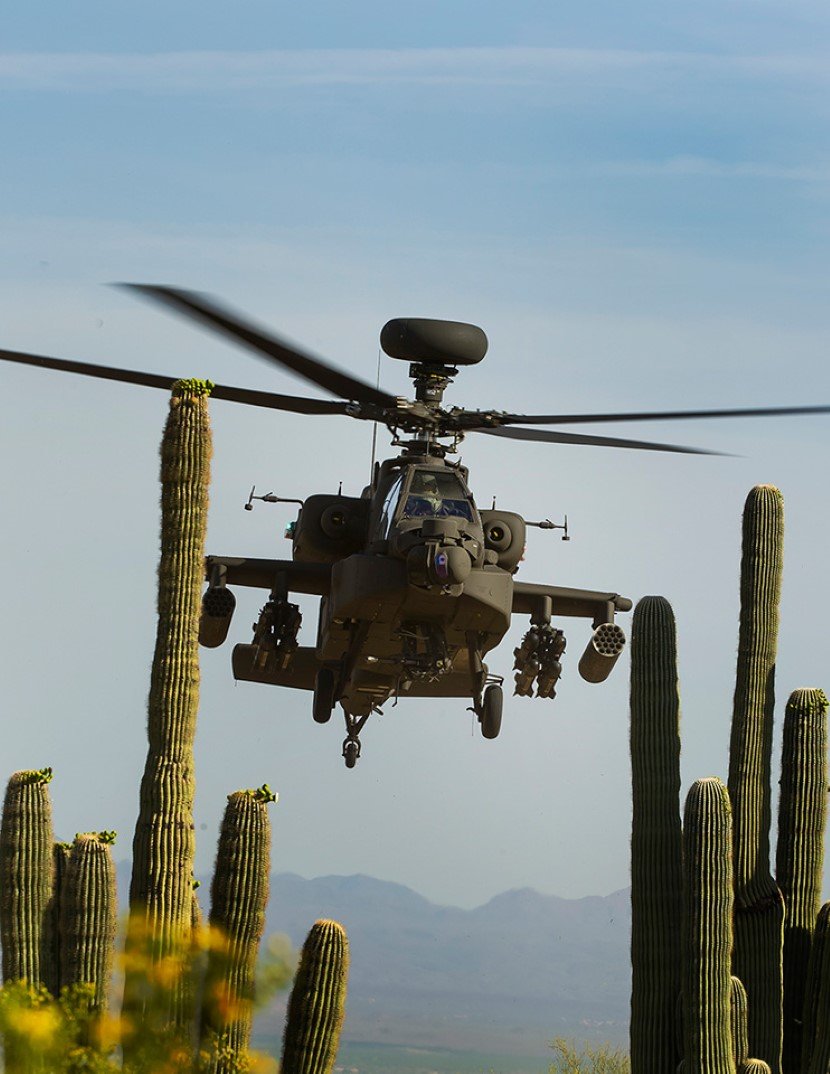 Image Credits: Boeing
Image Credits: Boeing
The AH 64 Apache helicopter is the American military’s star and they’re certainly not leaving anything at risk when it comes to this helicopter.
The US Army and Air Force is notorious for their over-the-top military and its deadly combat weapons. The military is always prepared to fight a war and as is pretty obvious, in combat, jeeps and other land vehicles aren’t of any feasibility. Therefore, in such conditions, the best-known vehicle is a helicopter.
The US military has thousands of helicopters, but the best one is certainly the AH-64 Apache Helicopter. All helicopters carry passengers and all need to be tough and safe; both these two variables need to be of better efficiency for military helicopters, but why is the AH 64 Apache helicopter topping our list?
 What makes the AH 64 Apache Helicopter so important?
What makes the AH 64 Apache Helicopter so important?
Well, AH 64 Apache Helicopter is known for not one or two, but multiple signifying factors. This rough and tough helicopter is the world’s most advanced multi-role combat helicopter. These helicopters form the essential backbone of the U.S. Air Force and multiple other countries’ military helicopter fleets.
The AH-64 Apache Helicopter is the U.S. Army’s heavy corps attack helicopter. As discussed before, it is a war vehicle doubling essentially as a weapon. The helicopter incorporates millimeter wave fire control radar, radar frequency interferometer, and fire-and-forget missiles among many other features.
It has been designed with one of the best military communication and navigation technology systems and offers great situational awareness and as well as better chances of survival.
Design and Technical Specifications
Designed and produced by Boeing, the helicopter combines the essence of strength and modernity with the specific and signatory military touch. The helicopter is designed to fight at the front, no matter what and no matter how hard the conditions may be.
The AH 64 Apache Helicopter is manned by two pilots who sit separately in the cockpit. In the cockpit, the front is the gunner or the copilot, and right behind him is the pilot. Both the pilots have separate weapon engagements. Between the two pilots is a shield so strong that in case of a collision, if one gets stuck the other will be totally safe.
There are two rotors; the main one is right at the top and the tail one, as is obvious, is at the helicopter’s tail – both have four blades.
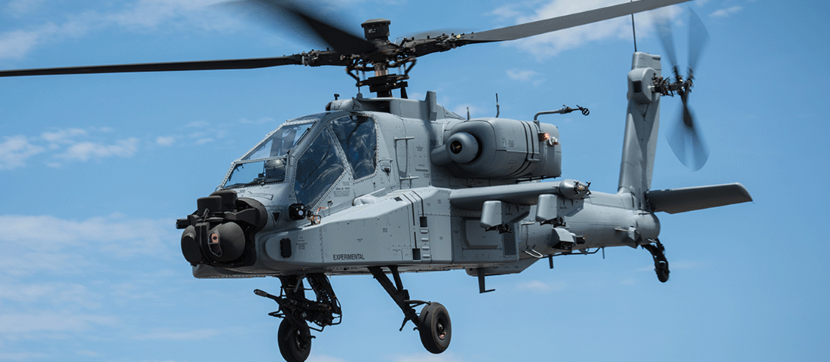
With a primary weight of 1,075 lbs and a maximum operating weight of 23,000lbs, the helicopter can climb at a steep height with a speed of 2800+ ft per minute. It has a cruise speed of 260km/h, a ferry range of 1,900km, and a service ceiling of 1,900km. It has an endurance of 189 minutes which is a measure of the time it can spend in the air cruising.
The AH 64 Apache has two turboshaft engines. Each one provides 1,265kW of power. For the American AH-64D, there are General Electric T700-GE-701 engines and the UK Apache owns RTM322 engines.
 Sensors
Sensors
The AH-64 Apache helicopter has some ultra-precise sensors. It has installed the Northrop Grumman millimeter-wave Longbow Radar which helps to offer great control even at night or when the visibility is low for a different reason. This radar is also fairly noise-proof and offers clear data. Since it has a short wavelength, it is also resistant to countermeasures.
The advanced sensors allow the sensing of the location, speed, and direction of movement for a good 356 targets.
There are also sensors like TADS (Target Acquisition and Designation System), PNVS (, Pilot Night Vision System), and Passive Infrared Countermeasures etc for navigation and night travel.
TADS helps with direct-view vision, television, and three fields-of-view forward-looking infrared (FLIR) for searching, detection, and recognition, and Litton (now known by the name “Northrop Grumman”) laser rangefinder. PNVS is FLIR in a rotating turret right over TADS.
The PNVS’ are viewed through a monocular eyepiece that gets worn by both the pilot and the co-pilot/gunner
Protection Systems
The AH 64 Apache features great protection systems. It fits the minimum requirements for energy attenuation upon crash for minimal crew casualties. The rotors and the cockpit can survive a hit from 23mm rounds and, the airframe is a 2.5k pound protection with a self-sealing fuel system.
The helicopter is structurally strong and contains landing gear that has been designed to stay maximum protected in case of a crash or some other accident.
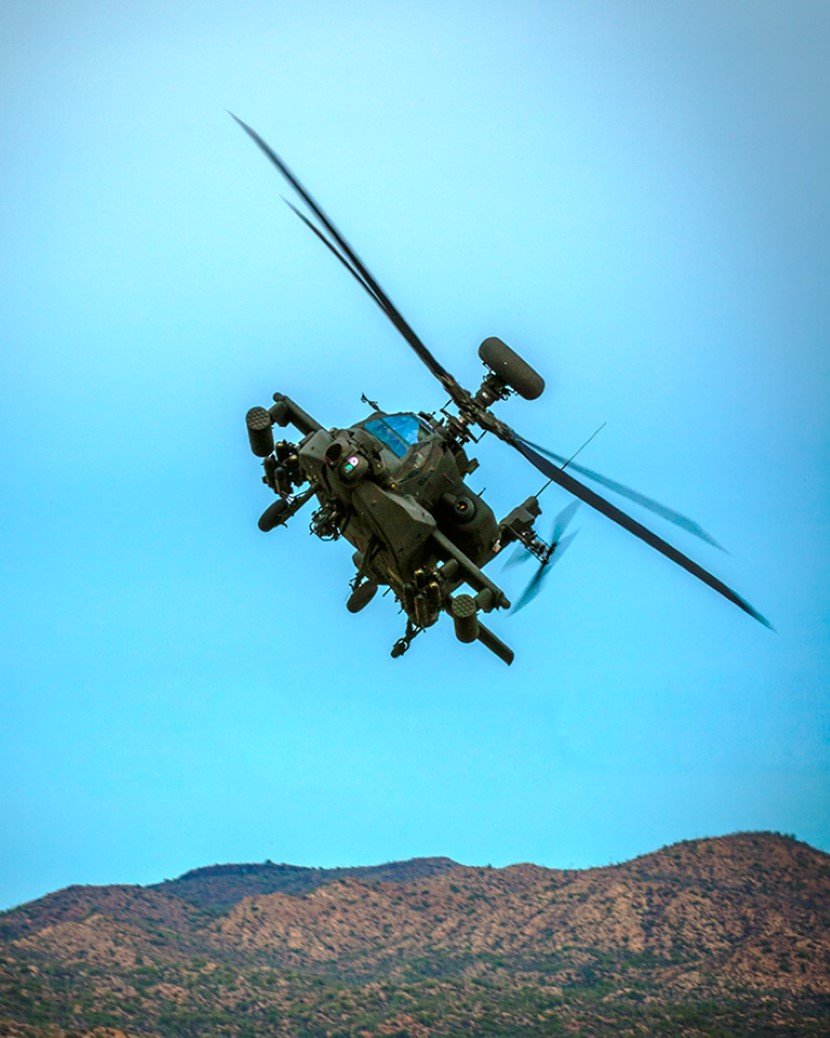
Weapon Systems on AH 64 Apache Helicopter
The AH-64D features some built-in weapons and also allows the addition of more systems. The AH 64 Apache helicopter has a capacity for about 1200 rounds of ammunition. Right under the fuselage is a 30m automatic Boeing M30 chain gun with a fire rate of 625 rounds per minute.
The helicopter is also armed with air-to-surface missiles. These are the Lockheed Martin / Boeing AGM-114D Longbow Hellfire missiles with a range of 8km to 12km, and a millimetre-wave seeker allowing for full fire and forget mode. The forget mode doesn’t require any guidance or assistance post-fire, and the missile does what it’s supposed to do.
The other equipable features include air-to-air missiles, APKWS, and rockets. The air-to-air installable missiles may be one of the four types including Stinger, AIM-9 Sidewinder, Mistral, and Sidearm. The APKWS or the Advanced Precision Kill Weapon System is a system that transforms unguided rockets into precision-guided rockets, that are much less expensive than normal precision-guided rockets, and also offer much less collateral damage.
Previously known as Hydra, these are the balance between unguided rockets and anti-armour ammunition. For the AH 64 Apache helicopters, 70mm rockets are transformed. For rockets, APKWS is certainly the best option for the U.S. military’s attacks given how often they are used.
The U.S. army certainly knew the importance and got the Apache helicopters armed with a special APKWS II which is a laser directed version of the older precision kill weapon system. This decision was contracted in 2006.
The AH 64 Apache helicopters owned by Britain included the CRV7 70mm rockets while the Longbow Apache is armed with 16 Hellfire missiles including four air-to-air missiles.
The AH 64 Apache Helicopter in the US Army
The U.S. owns multiple different models of the Apache helicopters. These include the AH 64A/D Apache helicopters and the Apache Longbow. U.S. military received its first AH 64 unit in January 1984 and today the entire fleet has covered more than 4.5 million hours in-flight hours.
The U.S. and many other nations collectively currently own around 2,200 Apache helicopters. These Apaches have all been produced by Boeing.
After the initial models, block II was contracted. This block II added upgrades on the digital communication system to the previous models and was delivered starting from February 2003. Just two years after that a plan for the block III models was in the works by the US government. The contract was then signed in 2006 and these deliveries started in 2007.
In 2010, again, the US military signed a $247 contract with Boeing to provide them with 51 AH-64D Apache Block III helicopters as a low-rate initial production (LRIP). In these latest AH-64D Block III Apaches, better digital systems, joint tactical radio system, better engine and drive system, and new blades were installed.
All Images: © Boeing
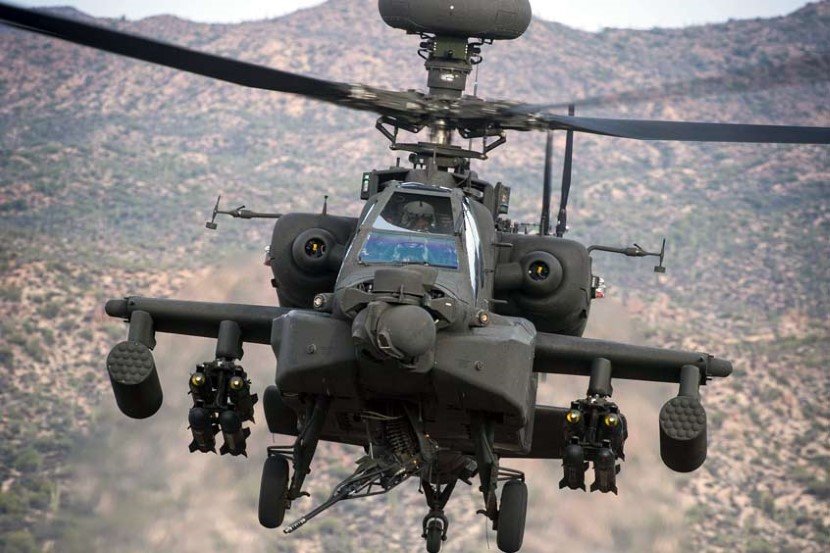 What makes the AH 64 Apache Helicopter so important?
What makes the AH 64 Apache Helicopter so important?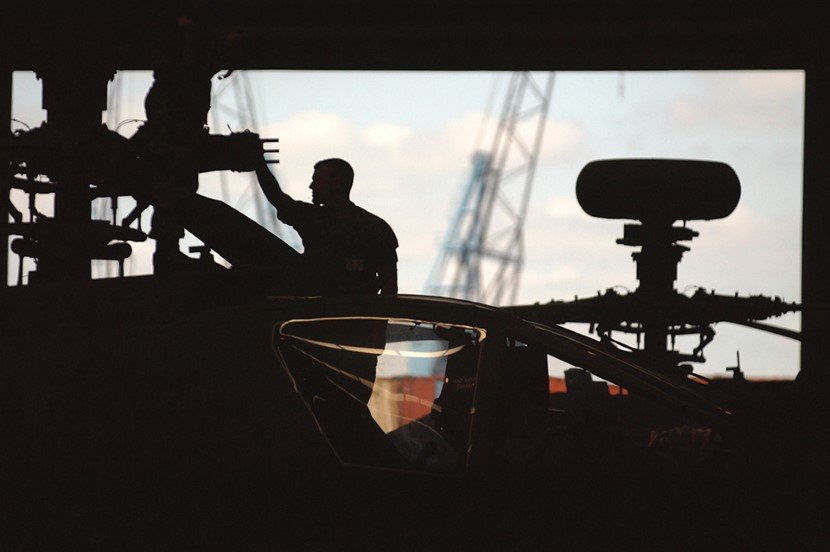 Sensors
Sensors